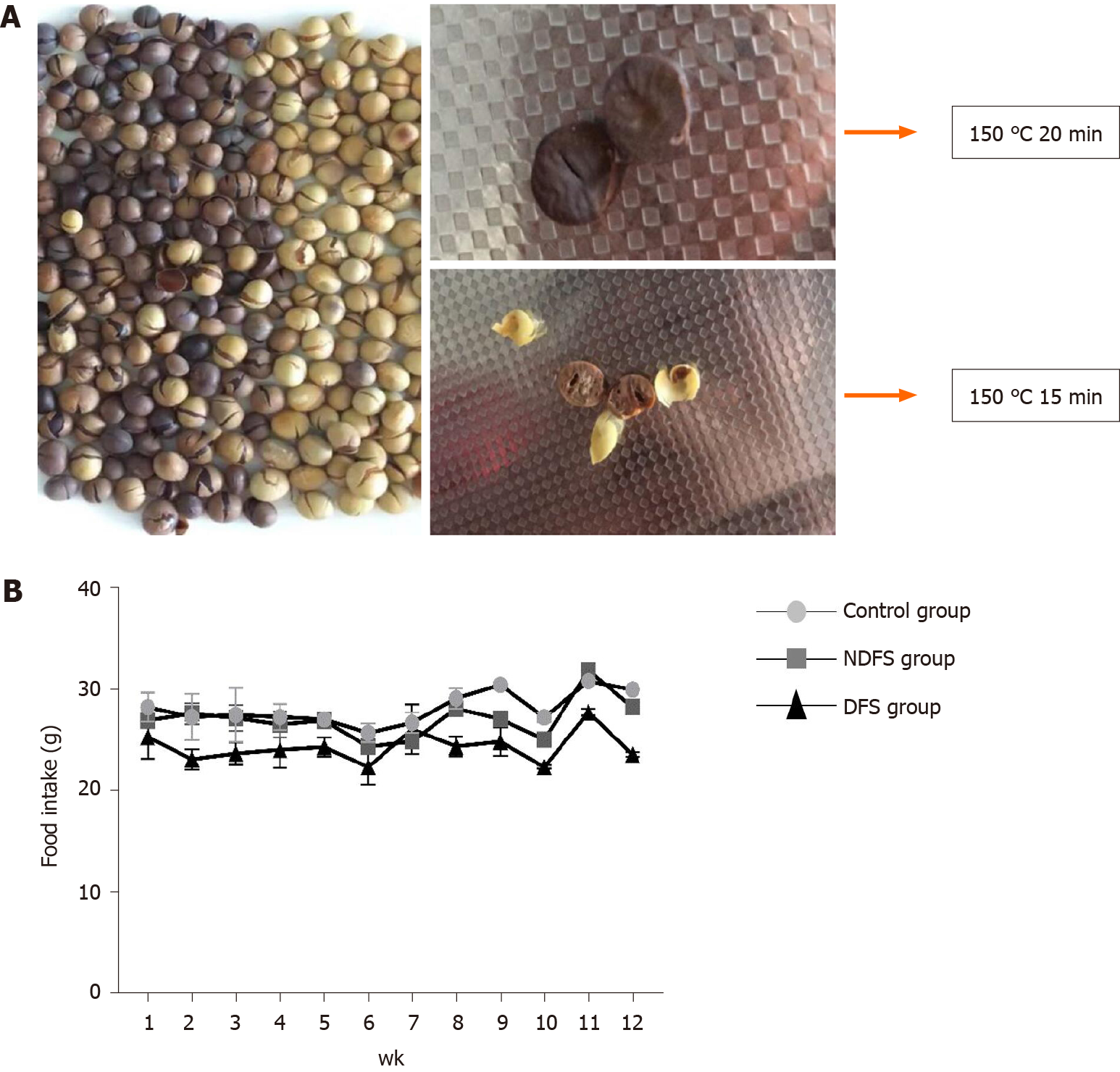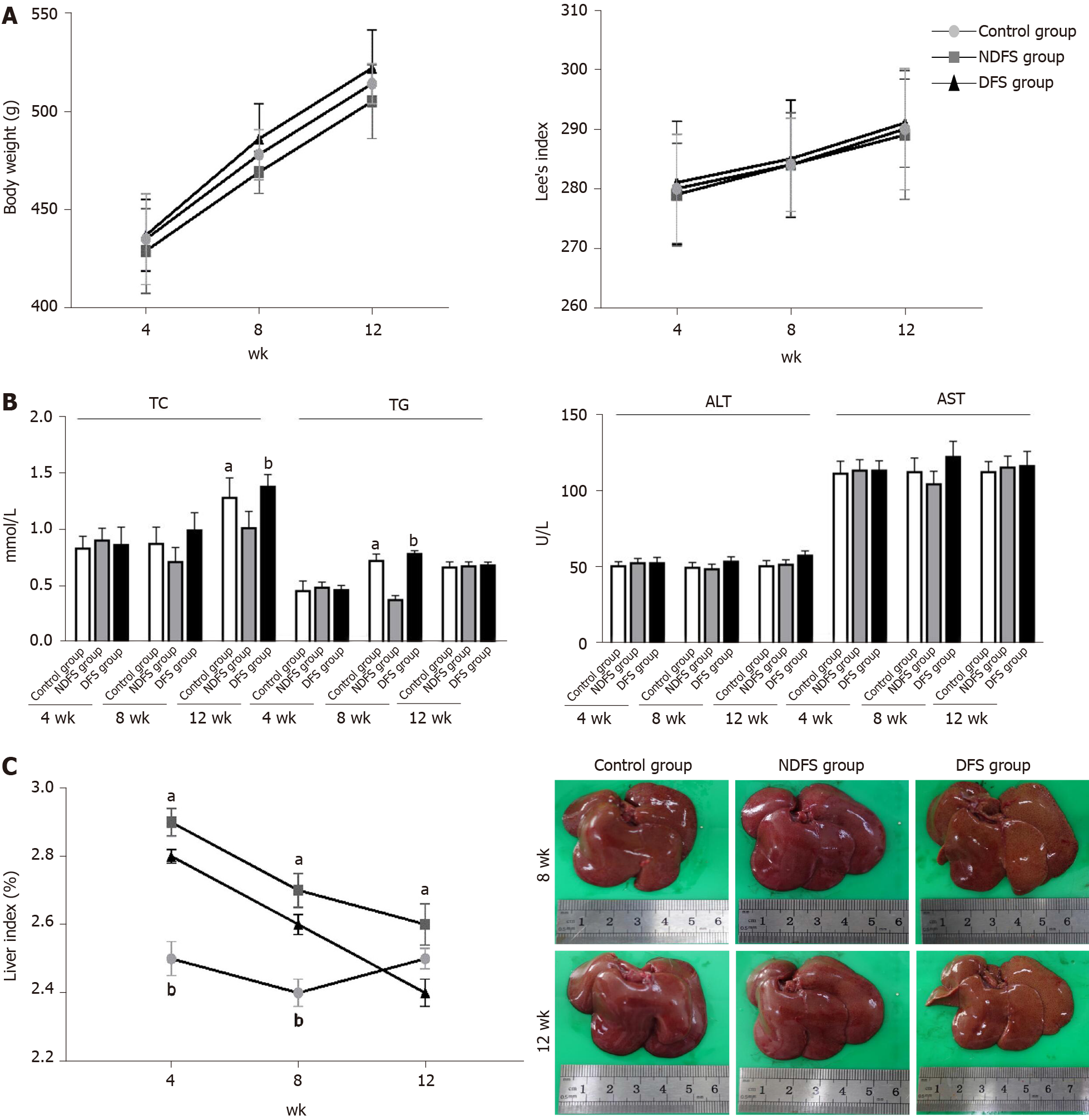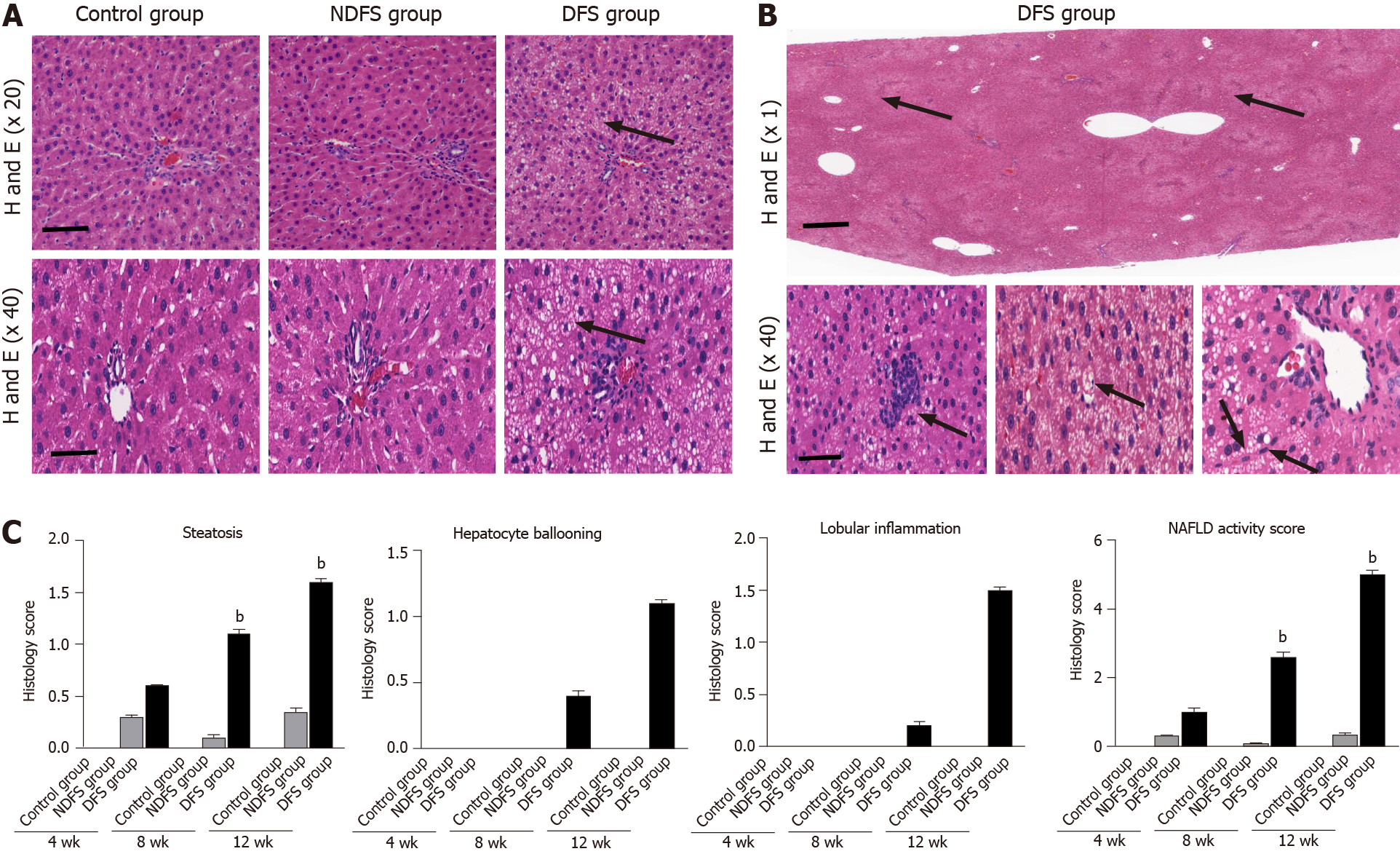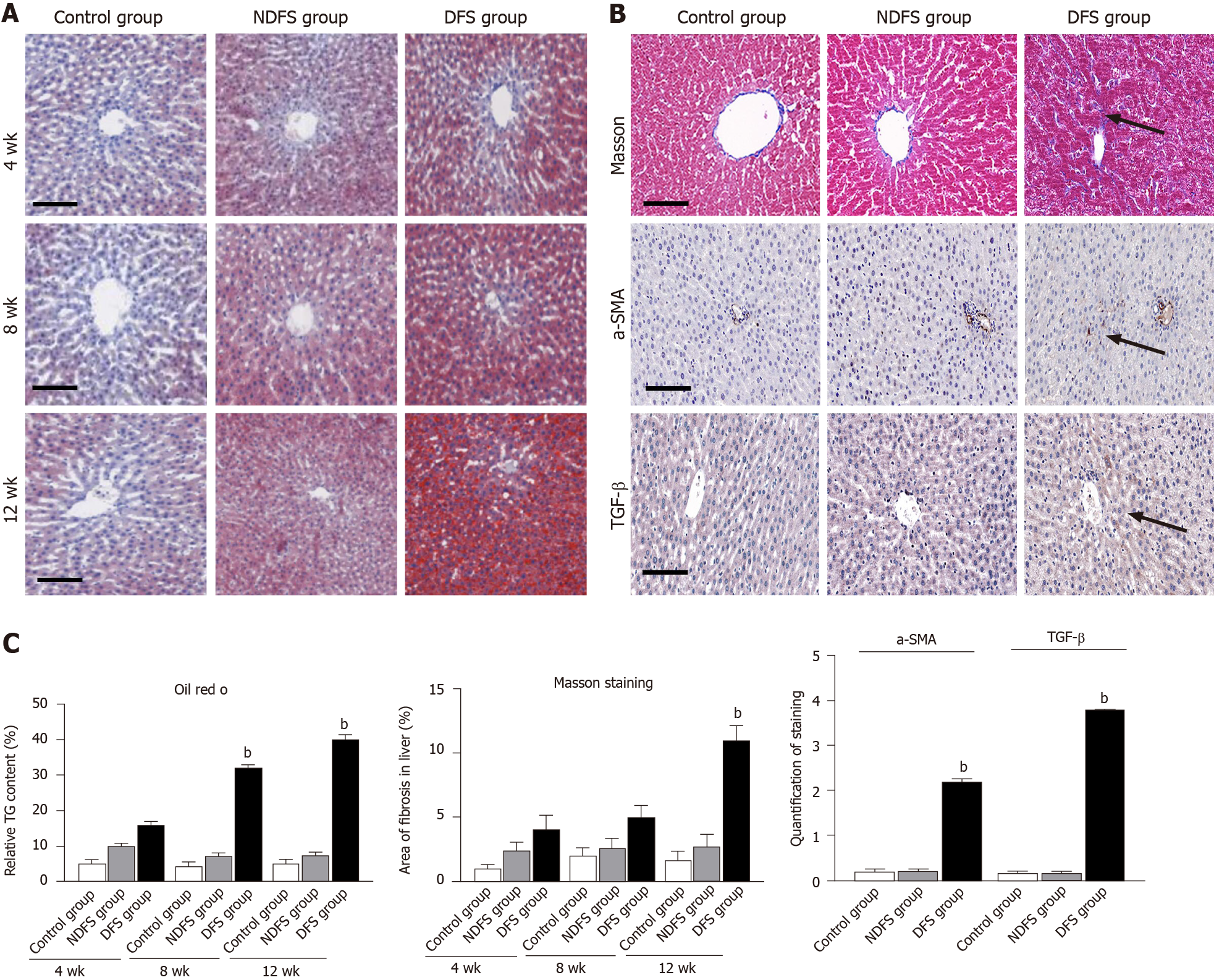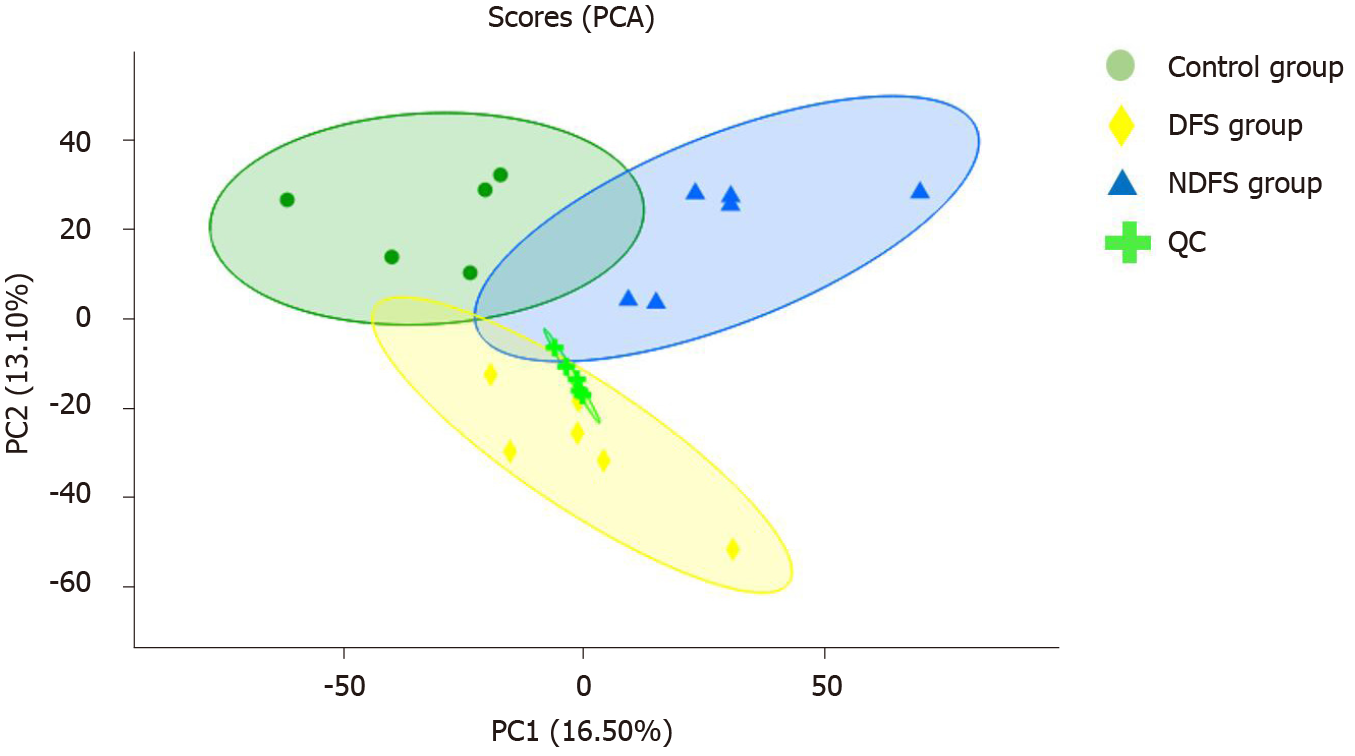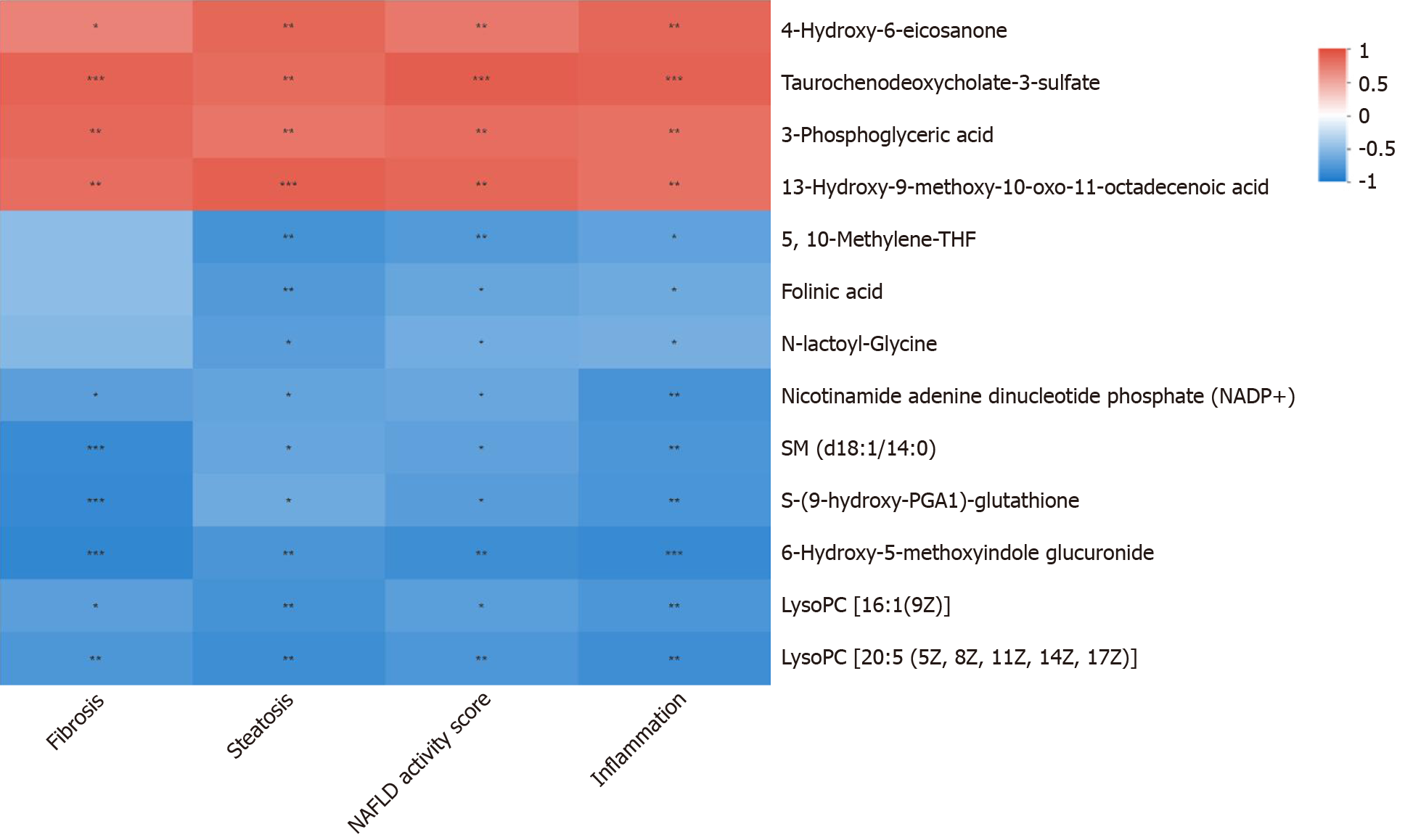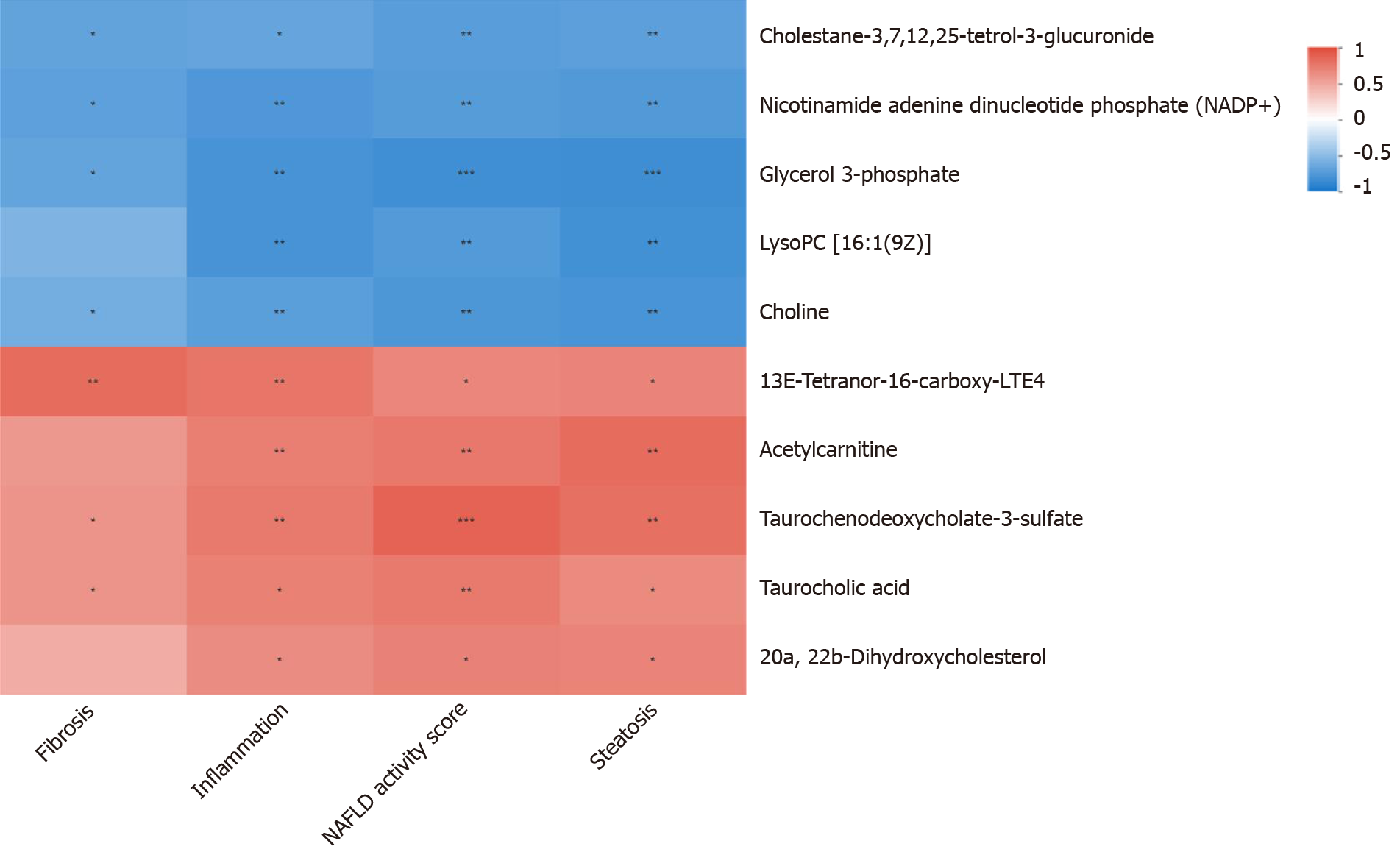Copyright
©The Author(s) 2020.
World J Gastroenterol. Dec 14, 2020; 26(46): 7299-7311
Published online Dec 14, 2020. doi: 10.3748/wjg.v26.i46.7299
Published online Dec 14, 2020. doi: 10.3748/wjg.v26.i46.7299
Figure 1 Preparation of dry-fried soybeans feed and food intake of rats in the three groups.
A: Preparation of dry-fried soybeans (DFS) feed. In our experiment, we used 150 °C, 15 min for DFS; B: Food intake of rats in the three groups. NDFS: Nonfried soybeans.
Figure 2 Metabolic parameters of rats in the three groups.
A: Body weight and Lee’s index; B: Serum lipid, serum enzyme levels [bP < 0.05, dry-fried soybeans (DFS) group compared to nonfried soybeans (NDFS) group; aP < 0.05, control group compared to NDFS group]; C: Liver index and liver morphology of rats in the three groups (data are expressed as the mean ± standard deviation; liver index, at week 4 and week 8, bP < 0.05, DFS group compared to control group, aP < 0.05, NDFS group vs control group, at week 12, aP < 0.05, NDFS group compared to DFS group).
Figure 3 Hematoxylin-eosin staining and histology score of rat liver in the three groups.
A: Steatosis of rat liver in the three groups at week 12. Scale bars = 100 μm (top row). Scale bars = 50 μm (bottom row); B: Special pathological features of rat liver from dry-fried soybeans (DFS) group at week 12 (diffuse steatosis around the portal area, scale bars = 2.5 μm. Inflammation, hepatocyte ballooning and clusters of myofibroblasts, scale bars = 50 μm); C: Histology score of steatosis, hepatocyte ballooning, lobular inflammation and nonalcoholic fatty liver disease activity score were quantified. Data are shown as mean ± standard deviation (bP < 0.05, DFS group vs control group, nonfried soybeans group [NDFS]). H and E: Hematoxylin-eosin.
Figure 4 Oil red O, Masson staining and immunohistochemical staining of rat liver in the three groups.
A: Oil red O staining of rats in the three groups at weeks 4, 8 and 12. Scale bars = 50 μm; B: Masson staining and immunohistochemical staining of rats in the three groups at week 12. Scale bars = 50 μm; C: Quantification for the percentage of relative triglyceride content determined by oil red O staining, semi-quantitative analysis of fibrosis detected by Masson staining and immunohistochemical staining. Data are shown as mean ± standard deviation (bP < 0.05, dry-fried soybeans [DFS] group vs control group, nonfried soybeans group [NDFS]).
Figure 5 Principal component analysis of three groups.
DFS: Dry-fried soybeans; NDFS: Nonfried soybeans; PCA: Principal component analysis.
Figure 6 Correlation between Metabolites and Pathology score between dry-fried soybeans and control groups at week 12.
NAFLD: Nonalcoholic fatty liver disease.
Figure 7 Correlation between Metabolites and Pathology score between dry-fried soybeans and nonfried soybeans groups at week 12.
NAFLD: Nonalcoholic fatty liver disease.
- Citation: Xue LJ, Han JQ, Zhou YC, Peng HY, Yin TF, Li KM, Yao SK. Untargeted metabolomics characteristics of nonobese nonalcoholic fatty liver disease induced by high-temperature-processed feed in Sprague-Dawley rats. World J Gastroenterol 2020; 26(46): 7299-7311
- URL: https://www.wjgnet.com/1007-9327/full/v26/i46/7299.htm
- DOI: https://dx.doi.org/10.3748/wjg.v26.i46.7299









